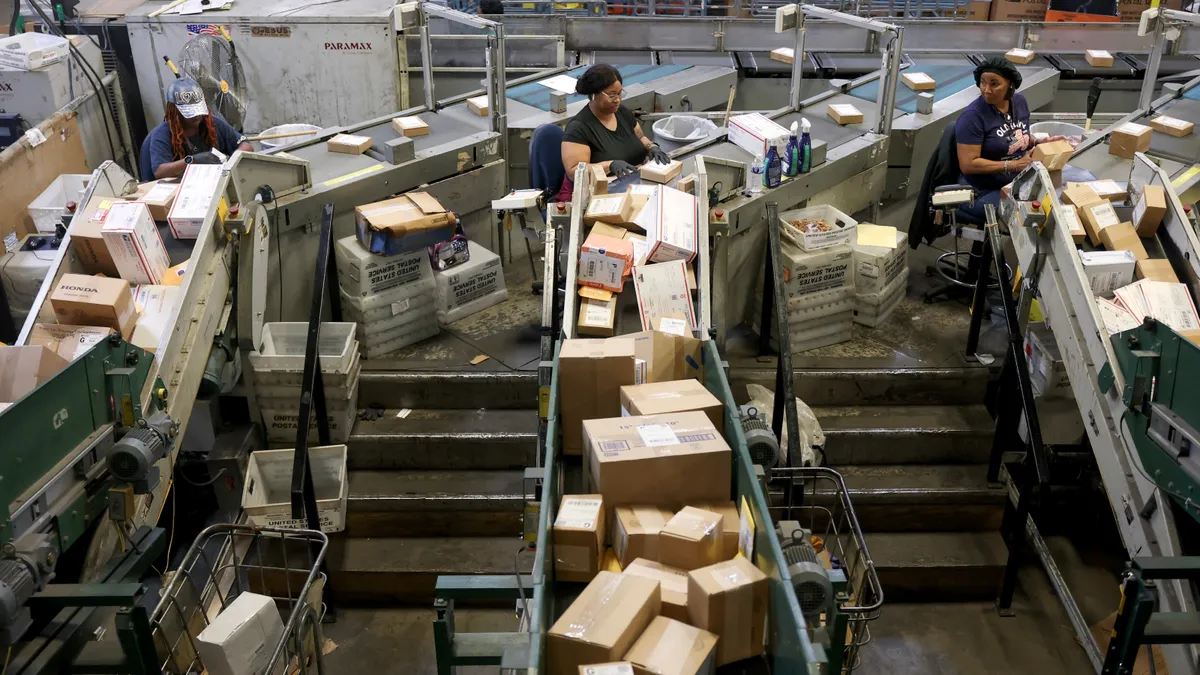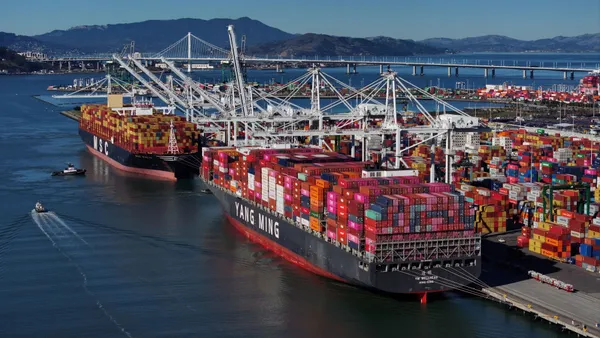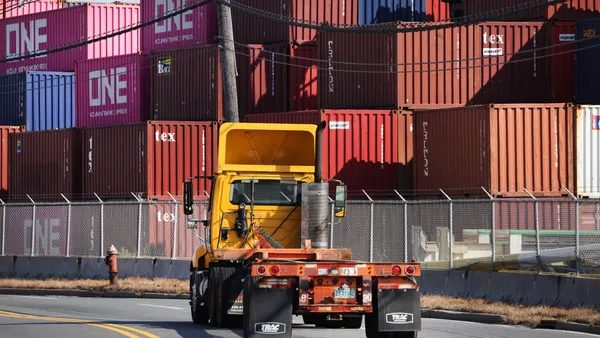Some global brands are pausing ocean shipments from China for the next couple of weeks as shippers assess how trade lanes may evolve, the Port of Los Angeles Executive Director Gene Seroka said during an April 11 press briefing.
“Folks are not shipping out of China right now because they're not going to pay two and a half times for those goods that are coming in, until we get some assemblance of a plan,” Seroka said.
Shippers and other supply chain stakeholders have battled severe trade uncertainty as the back-and-forth tariff exchange between the U.S. and China escalates. Most recently, the Trump administration announced plans to hike duties on imports from China to 125%, building on the several tariff increases implemented since February. China retaliated by upping its tariff on U.S. imports to 125%, effective April 12.
“When you have tariff rates [of] 125% to 145%, it effectively shuts down trade, to some extent,” Joe Kramek, president and CEO of the World Shipping Council, said during the meeting.
Seroka confirmed about 12 canceled or voided sailings at the Port of Los Angeles for the month of May. Last year, labor negotiations on the East and Gulf Coast ports, security concerns in the Red Sea and the ending of drought conditions at the Panama Canal led to the same number of voids in May, he added.
In the meantime, companies are looking to steady themselves by running various scenarios to see what these tariffs and trade policies mean for them, financially, Seroka said. He noted that there will likely be a price spike from retailers and parts suppliers in the manufacturing industry, leading to three possible mitigation measures.
“Can I negotiate with my manufacturer to mitigate some of the effects of these tariffs — and that's had very little success,” he said. “Can I take the margin hit, absorb some of this cost, which will lead to a freeze in hiring and a lack of capital investment immediately, or do I pass this on to my buyer?”
March volumes
In March, the Port of Los Angeles processed 778,405 total twenty-foot equivalent units, up 4.7% year over year, according to the Port of Los Angeles. By the end of the quarter, the port handled more than 2.5 million TEUs, up 5.2% YoY.
On the loaded exports side, the port handled 122,975 TEUs, down 15% compared to the same month in 2024.
Meanwhile, cargo frontloading continued to drive loaded import volumes, Seroka said, noting that the Port of Los Angeles handled 385,531 TEUs in March.
“Our volume remained strong throughout the first quarter, and we’ve now seen year-over-year growth in 18 of the last 20 months,” Seroka said at a media briefing. “The start of the second quarter looks encouraging as importers begin to plan for spring and summer fashion, as well as back to school.”
But while the next three weeks of loadings “look decent,” it may mark the end of the port's inventory surge. In February, cargo frontloading buffered the impact, driving the Port of Los Angeles to its second-best February on record.
However, because many importers brought in their goods early, the Port of Los Angeles will see an at least 10% YoY drop from July to the end of the year, starting as soon as May, Seroka said.
“It may be more than that,” he said. “We just don’t know.”














